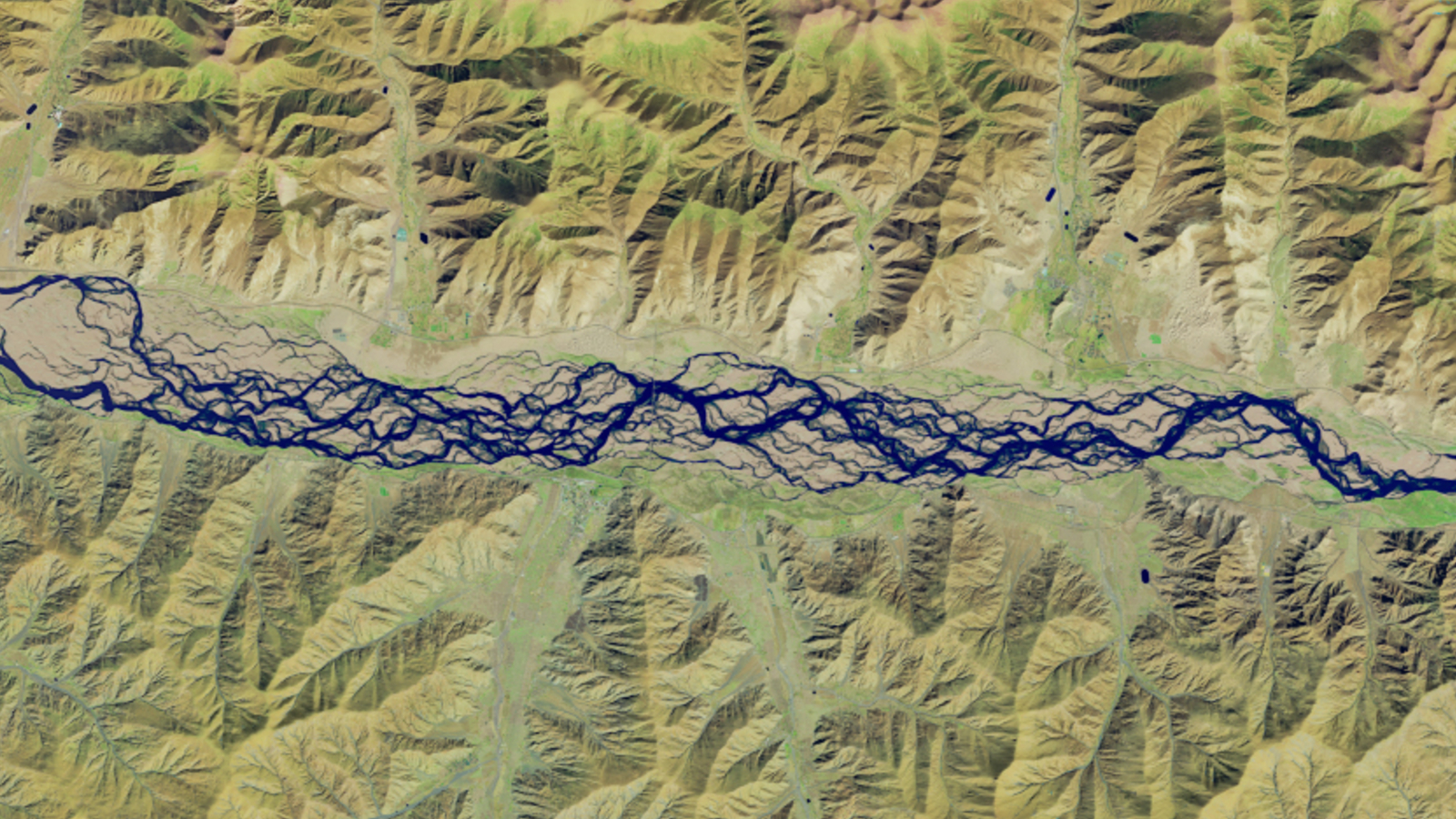
Texas Earthquakes Maybe Triggered by Mining Process
The injection deep into the earth of wastewater from natural gas mining may have spurred a series of small earthquakes in Texas, according to a new study.
Between Oct. 30, 2008, and May 31, 2009, more than 180 minor tremors were recorded near the Dallas-Fort Worth airport, an area unaccustomed to shaky ground. The quaking commenced shortly after the opening of a local disposal well for the liquid byproducts of natural gas mining mostly brine, or saltwater.
"When these earthquakes first occurred we had no idea if they were tectonic or if they were human-induced," said Cliff Frohlich, a geophysicist at The University of Texas at Austin.
Natural earthquakes had been felt in other parts of the state, and human meddling had been tied to such movement elsewhere. The ground shook shortly after the filling of Lake Mead in the 1930s, for example, as well as after major oil extractions and fluid injections around the world.
While science can't prove that the injections triggered the Texas shaking, Frohlich suggested that new data, which show a large number of quakes striking close in time and space to the well's activity, does make a mere coincidence unlikely.
First rumblings
Soon after people in Dallas and Fort Worth were rattled from the first few rumblings, Frohlich and his team set up a temporary array of seismographs. They recorded 11 earthquakes between Nov. 9, 2008, and Jan. 2, 2009, all small enough to go unnoticed by area residents.
Get the world’s most fascinating discoveries delivered straight to your inbox.
In the study, recently published in the Bulletin of the Seismological Society of America, the researchers also reviewed records from permanent seismic-recording stations in Oklahoma and Dallas for both the earthquakes that were felt and the events caught by their array.
By all accounts, the origin of the earthquakes appeared to trace back to the vicinity of the disposal well.
Air hockey hypothesis
But if there were a relationship, Frohlich wondered, then why would it occur in some spots and not others? There are tens of thousands of other places where people have pumped fluids into the earth without sending the ground rolling.
His best guess: the 2.6-mile (4.2-kilometer) deep well sits "close to a favorably oriented fault," he said.
Frohlich pointed to what he calls the "air hockey hypothesis." In the game, a slight push sends a plastic puck sliding across the table. But if the air under the puck is not turned on, friction keeps it in place.
"Similarly, if you pump fluids into the earth where there is a fault, it might push the sides of the fault apart just enough so that the rock can slip," he explained.
In Dallas-Fort Worth, the slips were small: no quake exceeded a magnitude 3.3. "We're not expecting large earthquakes here," Frohlich said.
Reinjection
Frohlich also emphasized that drilling doesn't appear to be the problem. There are four separate processes in the production of natural gas. After the initial drilling into gas-rich rock, pressurized water loaded with sand is injected to crack the formation and release the gas, a step known as fracking. The resource is then pulled to the surface, along with some unwanted fluids that are later separated from the natural gas and pumped back into deep rock at a nearby site.
It's only this last "reinjection" step, said Frohlich, which is "possibly" to blame.
"That's good news if you are a producer," he added. "If you think you're near a fault, you can take the fluids somewhere else."
But Chesapeake Energy, which runs the natural gas operations in the Dallas-Fort Worth region, doesn't plan to truck brine afar anytime soon. They remain unconvinced that their work is related to the seismic activity. "If saltwater disposal is the cause of the seismicity, it is very difficult to explain why the seismicity has continued for well over a year after the well was shut-in," Julie Wilson, vice president of urban development for the corporation, told OurAmazingPlanet.
Chesapeake Energy's disposal operations stopped in August 2009, she added, while sequences of similar earthquakes were recorded in May, June and November 2010.
One possible explanation for delayed shaking is that it could take a long time for the injected water to travel, and for pressures and stresses to equilibrate, Frohlich said. A slew of earthquakes in Denver in the early 1960s, blamed on injections of wastewater by the U.S. Army, were similarly drawn out, he said.
As in Texas, none of the Denver events exceeded magnitudes previously recorded in the area. Larger natural earthquakes hit Colorado, however, and the induced series did include a magnitude 5.3 quake. Despite these potential negative consequences, Frohlich still sees an important place for natural gas production in the United States.
"Unless you're going to turn off your air conditioner, you need something that provides a bridge for the next 20 to 30 years," said Frohlich, alluding to the transition toward alternative energies. "Natural gas is about as clean a fuel as any."
